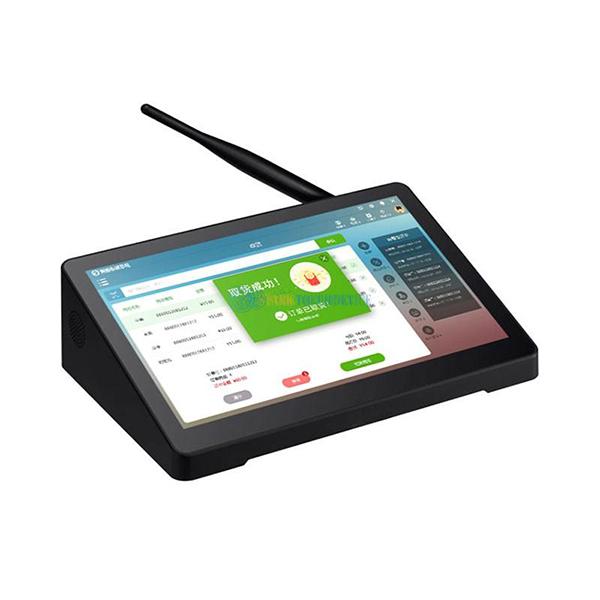Welcome STARK TOUCH DEVICE!
Solutions
Data protection operation for industrial control computer in case of sudden power failure
Data Protection Strategies for Industrial Control Computers During Sudden Power Outages
Industrial control computers (ICCs) often operate in environments where sudden power failures are inevitable, risking data corruption, system crashes, or unsafe equipment states. Implementing robust data protection mechanisms ensures operational continuity and prevents hardware damage. Below are technical approaches to safeguard ICCs during unplanned power losses.

1. Uninterruptible Power Supply (UPS) Integration with Software-Level Controls
While UPS systems are commonly used, their effectiveness depends on precise software integration to manage graceful shutdowns or temporary operation.
Implementation Steps:
Real-Time Power Monitoring: Deploy scripts or daemons to track voltage levels via hardware interfaces (e.g., GPIO pins or smart power sensors). For example, on Linux, read
/sys/class/power_supply/entries to detect voltage drops:bashcat /sys/class/power_supply/BAT0/voltage_now
Trigger alerts when thresholds are breached.
Graceful Shutdown Sequencing: Configure the ICC to initiate a controlled shutdown when remaining UPS runtime falls below a critical threshold. Use systemd services (Linux) to prioritize critical processes:
ini[Unit] Description=Graceful Shutdown Handler After=network.target [Service] Type=oneshot ExecStart=/usr/local/bin/shutdown_sequence.sh The script should flush buffers, close open files, and halt systems safely.
Battery-Backed RAM Retention: For systems with non-volatile DIMMs (NVDIMMs), configure firmware settings to retain critical data in memory during power loss. Verify retention by simulating outages and checking post-reboot data consistency.
Validation:
Simulate power cuts using a programmable power supply and verify that the ICC either shuts down cleanly or continues running on UPS power long enough to save data.
2. Journaling File Systems and Write-Ahead Logging
Sudden power failures can corrupt file systems or databases. Journaling and write-ahead logging (WAL) ensure data integrity by recording changes before they are committed.
Implementation Steps:
File System Selection: Use journaling file systems like ext4 or XFS. Enable journaling in ext4 via:
bashmkfs.ext4 -O journal /dev/sda1
Monitor journal activity with
dmesg | grep -i "ext4"to detect incomplete writes.Database WAL Configuration: For embedded databases (e.g., SQLite), enable WAL mode to decouple writes from reads. In SQLite, activate WAL with:
sqlPRAGMA journal_mode=WAL;
Test recovery by interrupting transactions during heavy I/O and verifying data consistency post-reboot.
Real-Time Data Buffering: Implement circular buffers in memory for time-sensitive data (e.g., sensor readings). Use double-buffering techniques to alternate between active and persistent buffers. For example:
cvolatile uint8_t buffer1[SIZE], buffer2[SIZE];volatile uint8_t *active_buf = buffer1;// On power failure signal, switch to buffer2 and persist
Validation:
Force power interruptions during file writes or database transactions and check for corruption using tools like fsck (file systems) or PRAGMA integrity_check (SQLite).
3. Hardware-Assisted Data Retention Mechanisms
Certain hardware components can retain data without power, providing an additional layer of protection.
Implementation Steps:
Supercapacitor-Backed Storage: Use storage devices with built-in supercapacitors to finalize writes during power loss. Configure firmware to prioritize critical data blocks. For example, in an SSD controller, adjust the
PowerFailProtectionparameter via vendor-specific tools.Ferroelectric RAM (FRAM) for Critical Logs: Replace volatile RAM with FRAM for storing safety-critical logs. FRAM retains data without power and supports unlimited write cycles. Integrate FRAM chips via SPI or I2C interfaces and redirect log output:
c// Example: Writing to FRAM via SPIspi_write(FRAM_ADDRESS, log_data, sizeof(log_data));
Non-Volatile Registers: For embedded controllers, use non-volatile registers to store safety-critical states (e.g., emergency stop flags). Configure these registers to latch values during power transitions.
Validation:
After power loss, verify that FRAM or supercapacitor-backed data matches pre-outage values using hex editors or custom validation scripts.
4. Redundant Storage and Real-Time Replication
Distributing data across multiple storage devices reduces the risk of single-point failures during power outages.
Implementation Steps:
RAID 1 for System Disks: Mirror the ICC’s operating system disk using software RAID (e.g.,
mdadmon Linux):bashmdadm --create /dev/md0 --level=1 --raid-devices=2 /dev/sda1 /dev/sdb1
Monitor array health with
cat /proc/mdstat.Synchronous Data Replication: For critical process data, use synchronous replication to a secondary storage device. On Linux, configure
drbdfor block-level replication:ini# /etc/drbd.d/resource.resresource resource {protocol C;syncer { rate 100M; }device /dev/drbd0;disk /dev/sdc1;meta-disk internal;on node1 { address 192.168.1.1:7788; }on node2 { address 192.168.1.2:7788; }}Network-Attached Storage (NAS) Fallback: If local storage fails, redirect critical logs to a networked NAS with its own UPS. Use
rsyncornfsmounts with automatic failover scripts.
Validation:
Pull the power plug on the primary storage device and confirm that the ICC switches to the redundant device without data loss.
Technical Considerations
Power Failure Signals: Use hardware signals (e.g., ACPI
GPEevents) to trigger pre-shutdown routines instead of relying solely on software polls.Watchdog Timers: Configure hardware watchdogs to reset the system if software hangs during power recovery.
Environmental Hardening: Protect UPS and storage devices from temperature extremes or vibrations that could impair their reliability.
By combining software-level controls, journaling mechanisms, hardware retention, and redundancy, industrial control computers can minimize data loss and ensure safe operations during sudden power outages.


